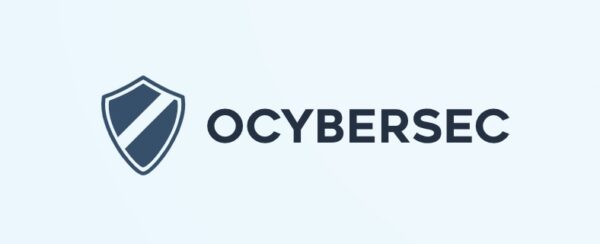The best option for protecting sensitive data and online accounts is multifactor authentication (MFA). To prevent unwanted access, standard username and password combinations are no longer adequate. By requesting that users submit multiple means of identity verification, MFA offers an additional degree of protection. This can be something they own (a smart card, token, or mobile device), something they know (a password), or something specific to them (biometric information like fingerprints or facial recognition). MFA improves security, but it’s not flawless. To target MFA systems and circumvent these security measures, hackers have modified their tactics. Below we give examples on the most recent attack techniques that hackers can employ to attack of MFA and provides advice on how to prevent these attacks.

Phishing Attacks Targeting MFA
Phishing stands out as one of the oldest and most effective ways hackers attack systems. As MFA has become more common, attackers have changed their approach to get around this extra security measure
how it Works:
To fool consumers into disclosing their account information, cybercriminals frequently send phony emails or build websites that mimic authentic login pages. Hackers attempt to obtain the second security step when a victim of this method enters their username and password. They employ an attack known as “Man-in-the-Middle” (MITM). The hacker interrupts your attempt to access the service. They use a tool to intercept the one-time code delivered to your phone or device, or they pose as the legitimate provider.
How to protect: The best defense against phishing is user awareness. Being trained to recognize phishing efforts can reduce the likelihood of falling victim. How to look for odd URLs, unfamiliar email senders, and messages typos should be covered in these sessions.
Apply Anti-Phishing Software: Install anti-phishing tools to find suspicious emails and websites. These tools often flag harmful links before users click them. Implement MFA with Hardware Tokens: Physical hardware tokens (like Yubikey or other USB-based authenticators) make it harder for hackers to break into the authentication process. This method doesn’t rely on a shared secret that someone could steal through phishing.
SIM Swapping and SMS-Based MFA Attacks
SMS-based MFA has a vulnerability to attacks like SIM swapping. In this attack, a hacker persuades a mobile carrier to move a victim’s phone number to a new SIM card they control. How it Works: After the hacker gains control of the victim’s phone number, they can get SMS-based OTPs sent for authentication. This allows them to bypass MFA. This method works well if the victim uses SMS as their second factor of authentication. SMS lacks end-to-end encryption, so hackers can take advantage of weak spots in telecom networks to steal or redirect communications.
Protection Measures: Stay away from SMS-based MFA: You should steer clear of SMS as a second factor for MFA when you can. To get more secure second-factor options, try authenticator apps (such as Google Authenticator or Authy) or hardware tokens. Create robust account recovery: Many service providers give you account recovery settings, like PIN codes or extra layers of authentication. Make sure your phone carrier and other services add security to your accounts and don’t just rely on SMS to recover. Turn on account locks and alerts: Some carriers send alerts for SIM changes. If you turn on these alerts, you can get early warnings if someone tries to swap SIM cards.
Social engineering attacks
aim to manipulate individuals into revealing sensitive information. Pretexting, a specific type of social engineering, involves the attacker pretending to be someone the target knows or trusts, like a colleague or service provider, to extract confidential information, including MFA details. How it Works: Attackers may reach out to users while posing as support staff or vendors, claiming they need authentication codes or other security information. Because the hacker is aware of the victim’s credentials or context, they can leverage this information to request additional MFA codes or persuade the victim to bypass security measures.
Protection Measures: Verification Procedures: It’s crucial for employees or users to be trained to verify requests for sensitive information. They should always use an independent method of verification, such as directly contacting the individual or using a known, trusted contact number. Limit Knowledge of MFA Details: The fewer individuals who are aware of the specific steps to access MFA systems, the less likely attackers will succeed with social engineering. Always exercise caution when sharing details about MFA or authentication methods.
Replay Attacks
A replay attack happens when an attacker intercepts a valid authentication message and reuses it. In multi-factor authentication (MFA) systems, this could involve capturing a legitimate MFA code or token and later using it to access the victim’s account. How it Works: In a replay attack, the attacker captures the transmission of a token or other authentication factor, saves it, and then reuses it to gain access later. This can occur when authentication codes lack time sensitivity or when token expiration mechanisms are weak or nonexistent.
Protection Measures: Implement Time-Based One-Time Passwords (TOTP): Utilize time-sensitive OTPs that are valid for only a short period. This significantly reduces the effectiveness of replaying intercepted authentication codes, as they expire quickly. Use Stronger Cryptography: Ensure that MFA solutions employ robust encryption and that tokens are cryptographically signed to prevent tampering.
Session Hijacking and Cross-Site Scripting (XSS) Attacks
Session hijacking takes place when an attacker steals an active session token, allowing them to access the target’s session without needing to authenticate with MFA. Cross-Site Scripting (XSS) vulnerabilities in websites can enable attackers to inject malicious scripts into the victim’s browser, capturing session tokens or authentication credentials.
How it Works: After the attacker injects a script into a website (often through a vulnerable input form), the script runs in the victim’s browser, capturing session tokens or authentication credentials, including MFA codes.
Protection Measures:
Secure Coding Practices: Ensure that websites are protected against XSS vulnerabilities by implementing proper input validation, output encoding, and using security libraries to sanitize user inputs. Use Secure Sessions: Always apply secure cookie attributes, such as HttpOnly, Secure, and SameSite, to safeguard session tokens. Session Timeout and Re-authentication: Establish session timeouts and periodically require users to re-authenticate.
Brute Force Attacks on MFA Systems
Although MFA generally increases security for users, it can still be susceptible to brute force attacks if not set up properly. Attackers may try to guess one of the authentication factors, such as a PIN or secondary password, through persistent trial and error. How it Works: Brute force attacks on MFA often focus on less secure second factors, like easily guessable PIN codes or weak one-time passwords (OTPs). Attackers might automate this guessing process using scripts or specialized tools to systematically try different codes over time.
Protection Measures: Limit Login Attempts: Implement rate-limiting or account lockout policies to restrict the number of guesses an attacker can make in a short timeframe. Use Strong, Randomized Tokens: Ensure that MFA codes are lengthy, random, and hard to guess. Avoid using simple numeric sequences or easily predictable codes.
Conclusion
Multifactor authentication is one of the most effective methods for safeguarding against unauthorized access to systems, but it is not foolproof. Cybercriminals are constantly adapting their tactics, focusing on vulnerabilities in MFA setups. To protect against these threats, organizations should adopt a multi-layered strategy: educating users, utilizing more secure second factors like hardware tokens or authenticator apps, and maintaining rigorous monitoring and alerting systems. By remaining vigilant, implementing the latest security practices, and regularly testing your MFA configuration, you can greatly diminish the likelihood of an attacker breaching your security measures.

